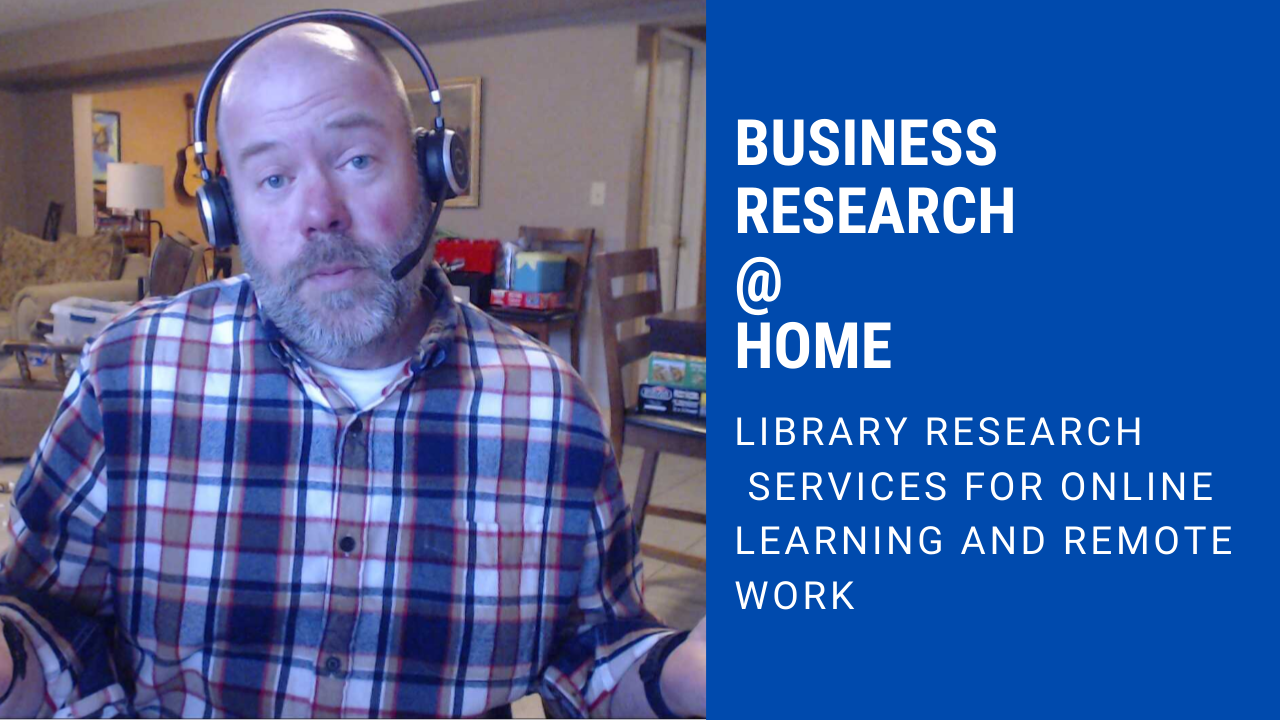
OHIO Librarian Remotely Delivers Research Instruction

Each semester at Ohio University, Chad Boeninger, business librarian and head of User Services at Alden Library, gears up to teach research sessions to somewhere between 350 and 400 business students. This spring is no different—except instead of students learning together in classrooms, students are learning from home through a series of videos crafted by Boeninger.
“Instead of one long, rambling video, I created six videos to divide the content into more manageable chunks,” wrote Boeninger in his blog, “Business Research at Home.” Using YouTube analytics, he explained his rationale, “Shorter videos mean that students can watch a few videos at a time, and my YouTube analytics seem to confirm this behavior.”
Boeninger, who has over 15 years of experience as the subject librarian for the College of Business, is well known for his research sessions to undergraduates, but interpreting data through video instruction—well, that can be tricky.
Business research, with its array of reports and statistics requires an understanding of data analysis and interpretation. This is where much of the complication comes in for business cluster students—and the need for assistance from ongoing research experts like Boeninger, who enjoys the one-on-one interactions and the opportunity to build relationships with both students and faculty.
“Most semesters, I will have 20-30 consultations over a two-week period with teams of four-to-six students,” said Boeninger. “I’m very lucky to develop those kinds of relationships with students… I also work closely with faculty to help develop the research assignments, and I am very appreciative of their trust in allowing me to partner with them.”
The business cluster, taken by all business students during their sophomore year, requires students to do extensive industry and market research, team write a 20-page paper and make a professional presentation via Microsoft Teams.
“Their final project each semester is to develop a business concept in a specific industry. They are required to use the Libraries’ resources and data in their paper, schematic reports, and in their final presentations to faculty [in order to] articulate the potential viability of the business concept,” explained Boeninger.
During this extensive research project, each participating student still carries a full course load of management, marketing, information systems and communication classes—all with worthwhile results.
Although this semester’s adjustment to the research-instruction portion of the class was mandatory to accommodate students working from home, the analytics are still promising.
“I will say that I am very pleased with the average percentage viewed for the videos,” wrote Boeninger in his blog. “Even the lowest percentage [of] watched video (at 53.6% of total viewed) is higher than the YouTube relative-audience retention of similar length videos. So, that’s not bad at all.”
Boeninger offers this advice to other colleagues working from home who are also in a somewhat isolated environment: don’t demand perfection. Just going that extra mile is what counts in helping students learn efficiently.
“I’ve been making videos since before YouTube even existed, so I’ve had a lot of practice and have gotten pretty particular about how I want my videos to look and sound. The videos, made for the [business] clusters while working from home, weren’t up to my usual production standards: I had a different setup; didn’t have my usual [equipment like my] microphone etc.; and I shot them all in one take, rather than re-recording the parts where I fumbled my words,” but, said Boeninger, “It’s awesome to see people use my content to make their work and lives easier.”
For colleagues wanting more information on working with Microsoft Teams, check out another blog post recently published by Boeninger— who hopes these blogs and videos help everyone in sharing information on the web for the benefit of all.
Image courtesy of Chad Boeninger’s blog post